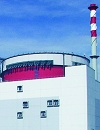Ten years ago to the day, August 12, 2000, the Russian nuclear submarine Kursk sank in the Barents Sea, killing all 118 crewmembers on board.
Designed to combat large surface ships, primarily aircraft carriers, the Kursk was the most advanced submarine in the Russian navy at the time. Construction began in March 1990, and the Kursk set out on her maiden voyage in May 1994.
The sinking of the Kursk remains the worst disaster in the history of the Russian submarine fleet. The accident occurred during an exercise of the North Fleet, in which the Kursk was taking part. The vessel sank at a depth of a little over 100 meters, 108 miles from the Kola Strait.
According to the official explanation, the disaster was caused by the accidental explosion of a torpedo in one of the torpedo tubes, causing other torpedoes to explode. Investigators say that the first blast occurred as a result of a hydrogen composite leaking from micro-cracks in the torpedo's casing, which were caused, in turn, by what they termed "extraordinary processes" in their report.
As for the crew, they are said to have died in the first 7-8 hours following the blast. But according to the records of a cruiser that was in the area when the Kursk sank, knocking inside the U-boat continued until 11:08 am, August 14, nearly two days after the explosion.
If that's the case, why did top Russian government officials and military commanders refuse foreign assistance for so long, when the inadequacy of their own rescue equipment was apparent from the very start?
But let's return for now to the root causes of the Kursk's demise. The two most popular of the unofficial theories claim that she collided with another ship or was torpedoed by a U.S. submarine. Indeed, there were media reports about the presence of at least three foreign nuclear subs in the area of the Northern Fleet exercises, as well as foreign-made subsurface buoys and one other unidentified submarine. Also, a damaged U.S. submarine was reported to have entered a Norwegian port shortly after the Kursk sank. Several newspapers carried satellite photos of this, but the authenticity of the photos cannot be verified. No other documentary evidence has been provided since to back up this dubious theory.
What we know for certain, however, is that foreign submarines were around at the time of the Russian naval exercise. The decades-old practice of submarine standoffs has persisted to this day - just one aspect of the Cold War legacy.
Those who hold that the Kursk was torpedoed by a U.S. sub also point to the "foreign factor." Proponents of this theory, shared by a number of Russian naval experts, claim that submarine responsible was the USS Memphis, which was perilously close to the Kursk, and that her commander ordered a preemptive strike on hearing the caps removed from torpedo tubes on the Kursk. He allegedly thought his sub was being targeted when, in fact, the Russians were just preparing for an exercise in torpedo launching.
The only evidence that supporters of these theories can point to is the immediate flare up in U.S.-Russian diplomatic activity, including an unscheduled phone call between President Vladimir Putin and President Bill Clinton, and CIA Director George Tenet's emergency visit to Moscow on August 17, 2000. Soon after that visit, the Russian military's top-brass stopped suggesting on the record that the Kursk sunk as a result of a collision with a foreign submarine. And the U.S. agreed to write off a portion Russia's debts (about $10 billion in total).
The main argument against this theory is that too many people would have to have been in on the cover-up. The conspirators would have included the U.S. Navy command, the British Royal Navy, the Norwegian Navy, the Russian Navy, politicians of three countries, the entire workforce at a repair yard at the Bergen naval base, the crew of at least one American submarine and of the Russian cruiser Peter the Great, which was located in immediate proximity to the disaster site, allowing her acoustic equipment to record all the noises coming from the Kursk. The fact that thousands of people all around the world would have had to remain silent on the true cause makes it quite clear that these explanations belong to the realm of conspiracy theory.
Many in the expert community claim the torpedo that initially exploded was based on a flawed design, and furthermore was in disrepair at the time of the blast, due primarily to Russia's routine violations of ammunition storage and maintenance rules following the collapse of the Soviet Union.
The situation was equally deplorable in other areas of military life. Government allocations were meager for the Navy, as were wages for service personnel. Housing was substandard, and necessary repairs were neglected. All this paved the way for the disaster, as military personnel trying to eke out a living cannot properly perform their duties.
The year 2000 marked a shift in the Russian government's attitude toward the Navy, and federal spending on its upkeep has been going up ever since. So, hopefully, the government's stated intention of revamping the naval forces, including the submarine fleet, will soon become a reality.
But the threat of submarine conflicts remains. While dangerous maneuvers with ships and aircraft are kept in check by U.S.-Soviet agreements, there is no way to control the movement of submarines, and underwater surveillance, which is often done just several dozen meters away from an enemy boat, makes the risk of a collision all too real.
Even in this extreme situation it is possible to guarantee that there is no threat to the nuclear security.
The sale will help OMZ focus on the steel business in Russia.
Russian nuclear center in the Nizhny Novgorod region is safe despite wildfires raging nearby.



